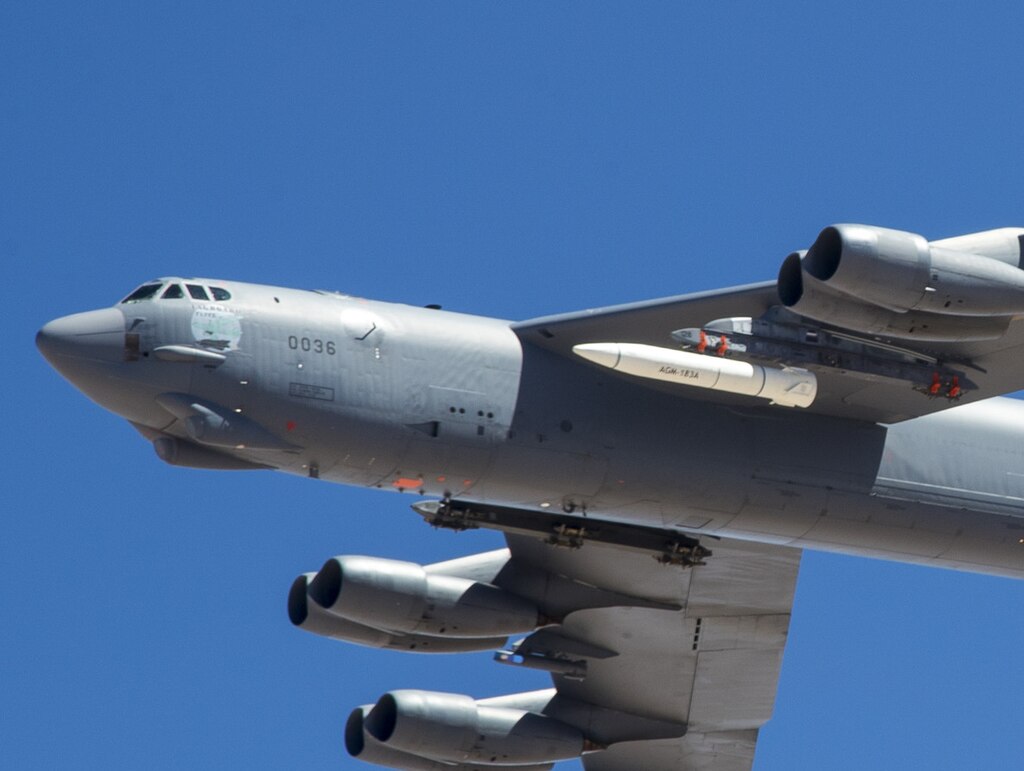Lagging behind Russia and China in hypersonic missile technology, the Pentagon might build a “second track” to test hypersonic systems that can travel above Mach 5 (five times the speed of sound).
Interestingly, the present track is 70 years old and is primarily used for testing airplane ejection seats. George Rumford, director of the Pentagon’s Test Resource Management Center (TRMC), revealed this to the House Armed Services Strategic Forces subcommittee on March 12.
The track is located at the Holloman Air Base in New Mexico and is operated by the Arnold Engineering and Development Complex. It is also used to test the lethality and efficacy of warheads and the effect of weather and erosion on hypersonic weapons.
While the TRMC has four other tracks—Eglin Air Force Base in Florida, China Lake in California, and one each at Utah and New Mexico—only the Holloman track is 50,000 feet (15 km/9.46 miles) long. This length is adequate to clock and measure a vehicle’s performance as it accelerates to hypersonic speeds.
US Needs More Hypersonic Testing Tracks
While the Holloman track is adequate in terms of size, it lacks testing infrastructure and systems. But installing these is time-consuming.
In September 2020, the TRMC built an on-site laboratory to “gauge the rain field’s artificial rain and conduct verification sled tests to test the track’s capacity to handle missile materials.”

The report said, “But completing that work disrupts testing schedules, and having a new high-speed track would increase the capacity at a time when DOD is pushing to improve its testing cadence.”
“As a nation, we need a new track,” Rumford said. “When we modernize the track, we have to take the track offline for a period of time, which is the exact opposite of what we want to be doing when we’re trying to go fast and take on more risk.”
Its fiscal 2025 budget request, released March 11, includes $9.8 billion to develop hypersonic and other long-range missiles. It also proposes $163.4 million to support production, supply chain, and test capabilities for hypersonic systems.
The department is making several efforts to boost its testing capacity. On the ground, the TRMC is investing in improvements to government-owned test facilities and partnering with private-sector organizations to address shortfalls in propulsion testing for air-breathing hypersonic vehicles and aeroshell materials for boost-glide systems.
Enter the Holloman High-Speed Test Track
Operated by the 846th Test Squadron, the Holloman High-Speed Test Track uses sleds that go “9,645 feet per second” to test various aerospace devices and projectiles that would be used by the US military. In addition to hypersonic testing, these include “egress testing, parachute drag testing, bunker bomb testing (and) impact testing.”
The 9,645-feet-per-second speed number associated with Holloman was actually the world land speed record broken in 2003. One of the sleds reached the speed during a test. It was also where US Air Force Col. John P. Stapp, a doctor for the USAF in December 1954, would study the effects that G’s would put on a human during deceleration.
During that time, he would break a land speed record himself by going on to hit 632 miles per hour while riding a sled. Stapp also sustained the most Gs during a single period when he hit 46.2 Gs while decelerating.
‘Needs Patience, More Testing & Facilities’
A section of scientists and politicians, however, have long urged patience with highly complex technologies like hypersonics, pointing chiefly to the poor frequency of testing and lack of testing facilities in the US as the reason for its lag in the area.
Following a failed test of the AGM-183 Air-Launched Rapid Response Weapon (ARRW) on March 13, 2023, when it was fired from a B-52H Stratofortress off the California coast, Representative Doug Lamborn on May 12 called for increased testing and enhanced infrastructure to perfect the technology.
“We must expand testing and make it cheaper and more accessible. Testing is fundamentally in a logjam,” Lamborn said at a seminar discussing the National Defense Industrial Association’s Emerging Technologies Institute’s (ETI) report on deficiencies in the national hypersonics industrial base.
Balancing hypersonic projects and other “strategic programs” on the overstretched test facilities was “impeding forward progress in many defense technologies, but specifically hypersonics,” Lamborn said. While “deconflicting test range schedules among other programs is challenging enough,” it becomes “all but impossible” to maintain a steady test-assess-retest rhythm, the congressman noted.
In his written testimony before the HASC on March 29, 2023, US Air Force acquisition chief Andrew Hunter too recommended “completing All-Up Round (AUR) test flights…to garner the learning and test data that will help inform future hypersonic programs and potential leave-behind capability.”
With regards to testing infrastructure, the ETI report recommended upgrading ground-based testing facilities like wind tunnels and “additional arc jet facilities providing ground-based hyperthermal environments” to support the testing of thermal protection materials and vehicle structures.
Interestingly, China also achieved a lead here with the development of the JF-22 hypervelocity wind tunnel, which will allow it to simulate flights at Mach 30.
- The author can be reached at satamp@gmail.com
- Follow EurAsian Times on Google News